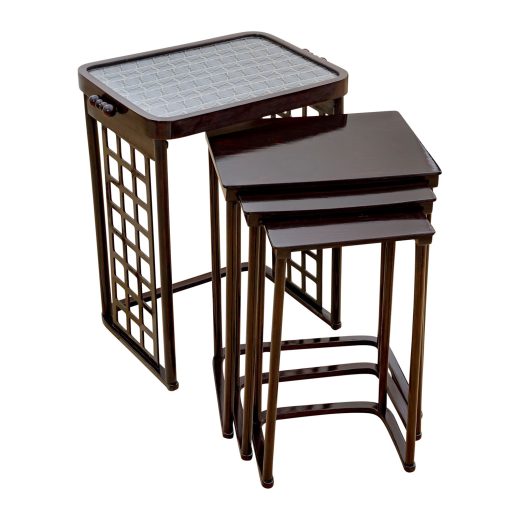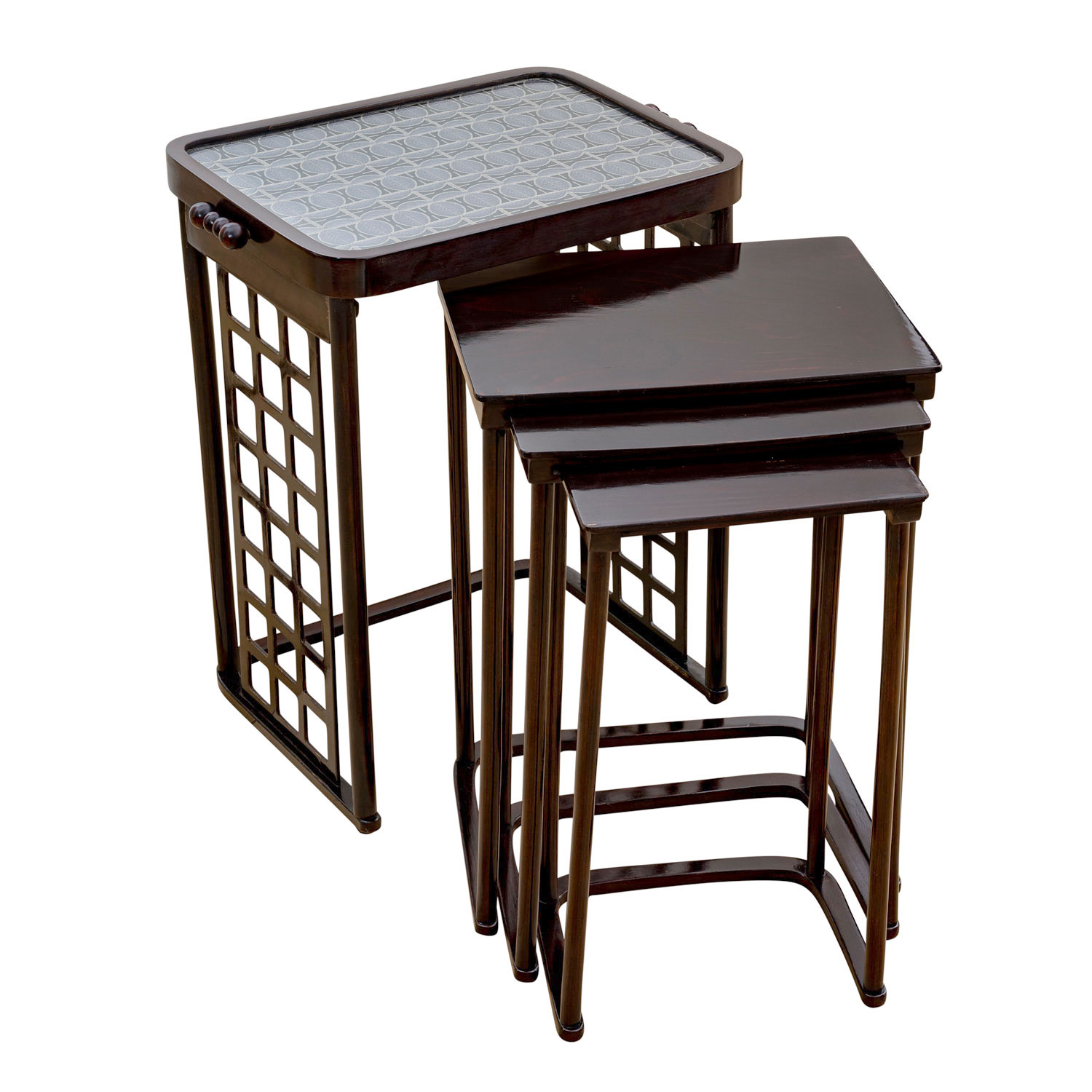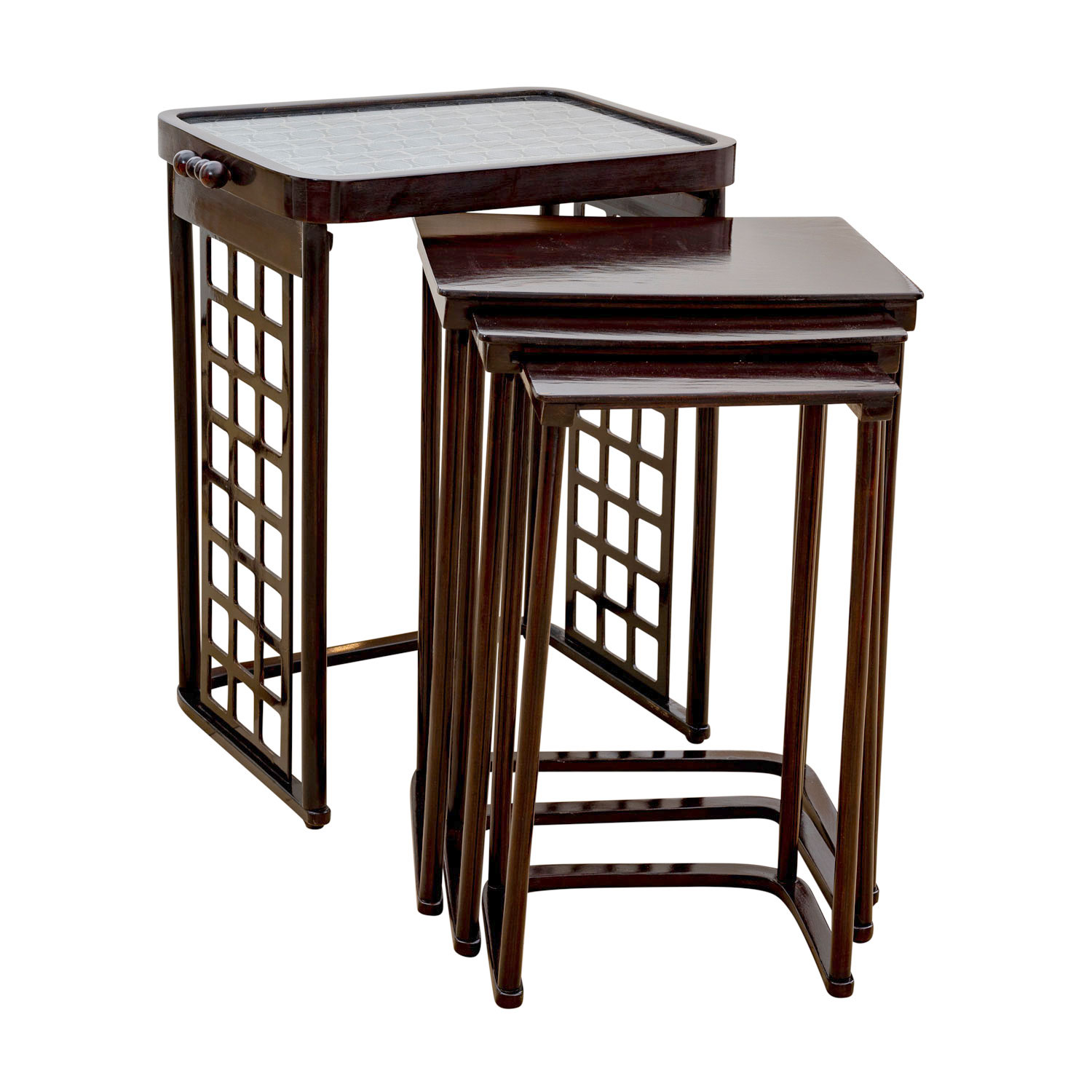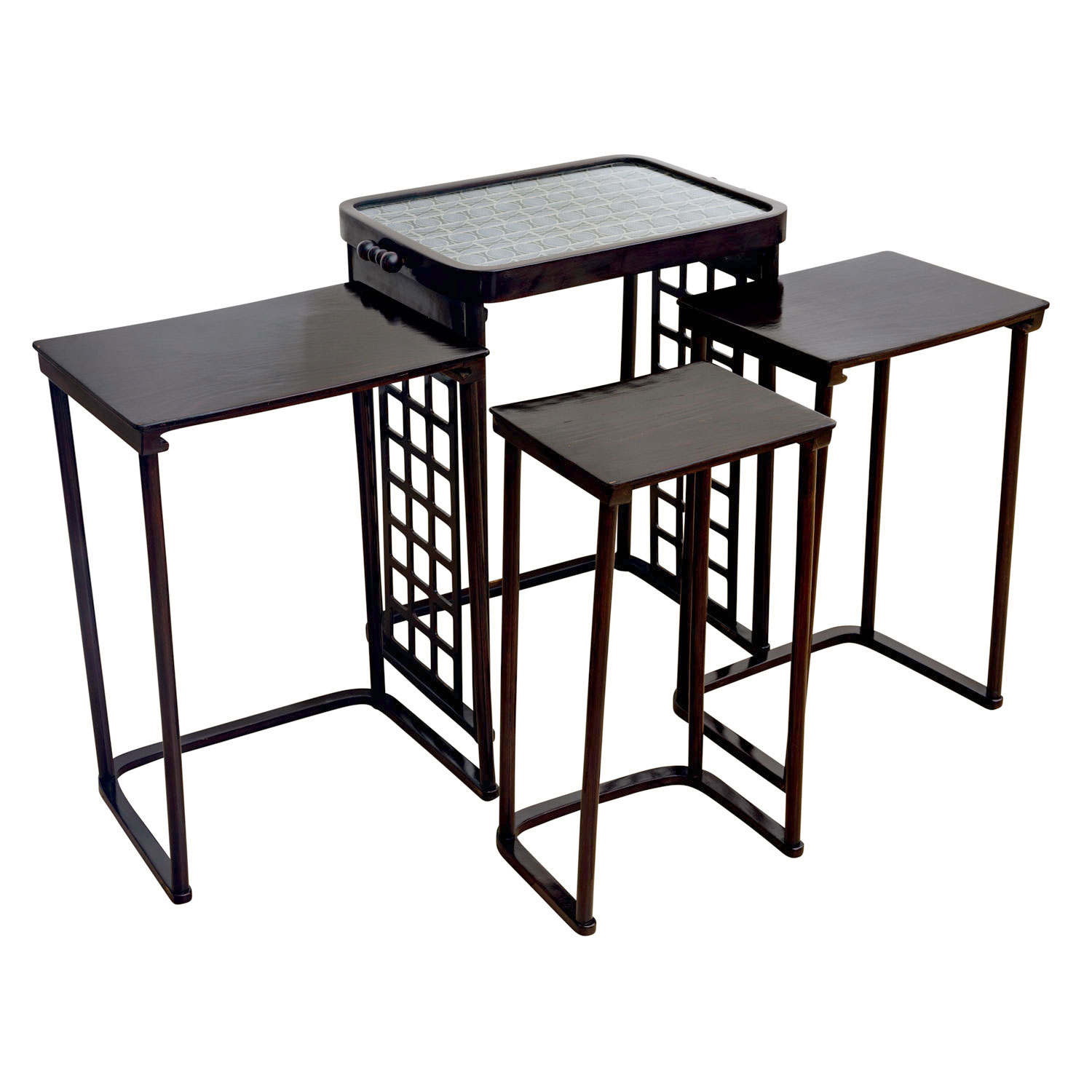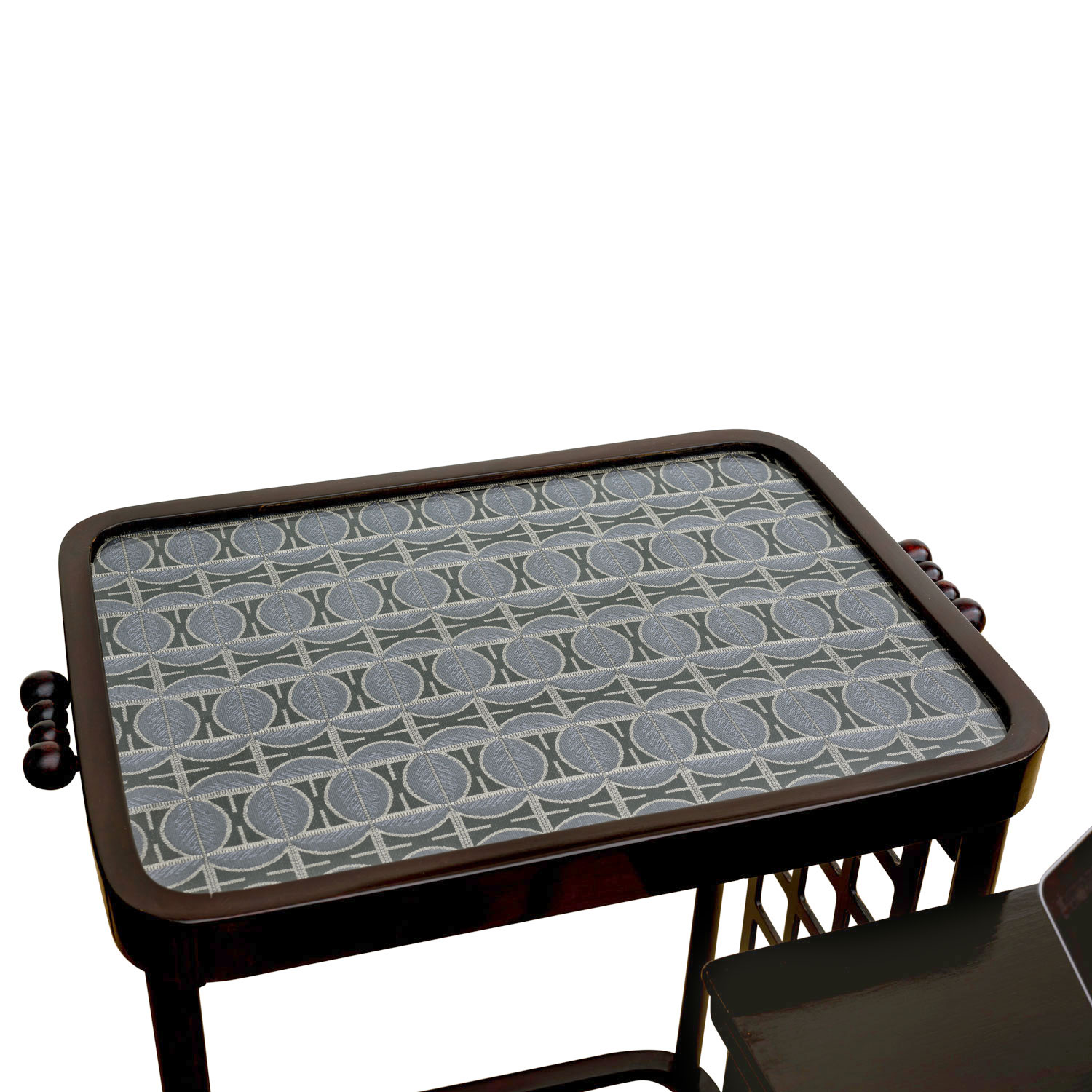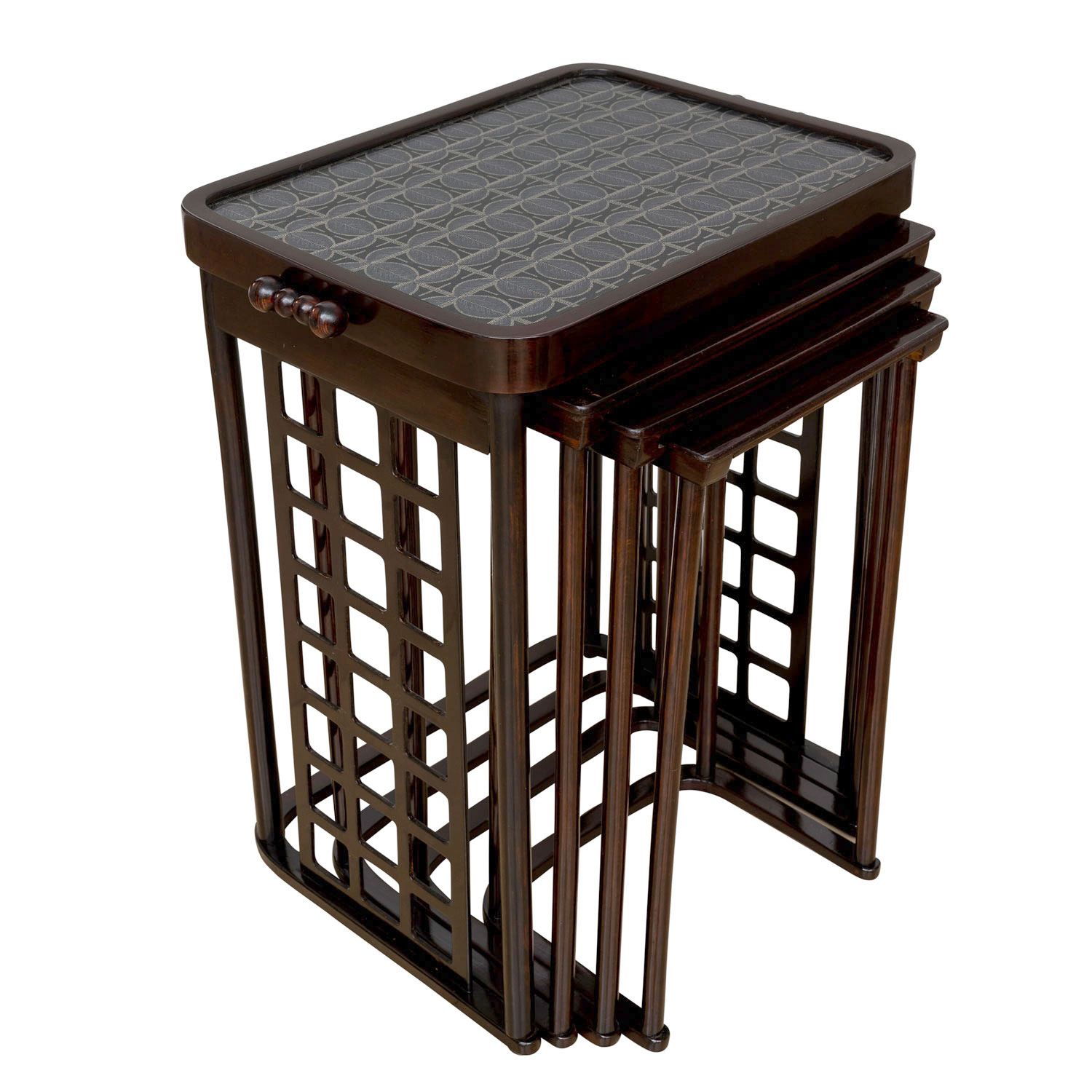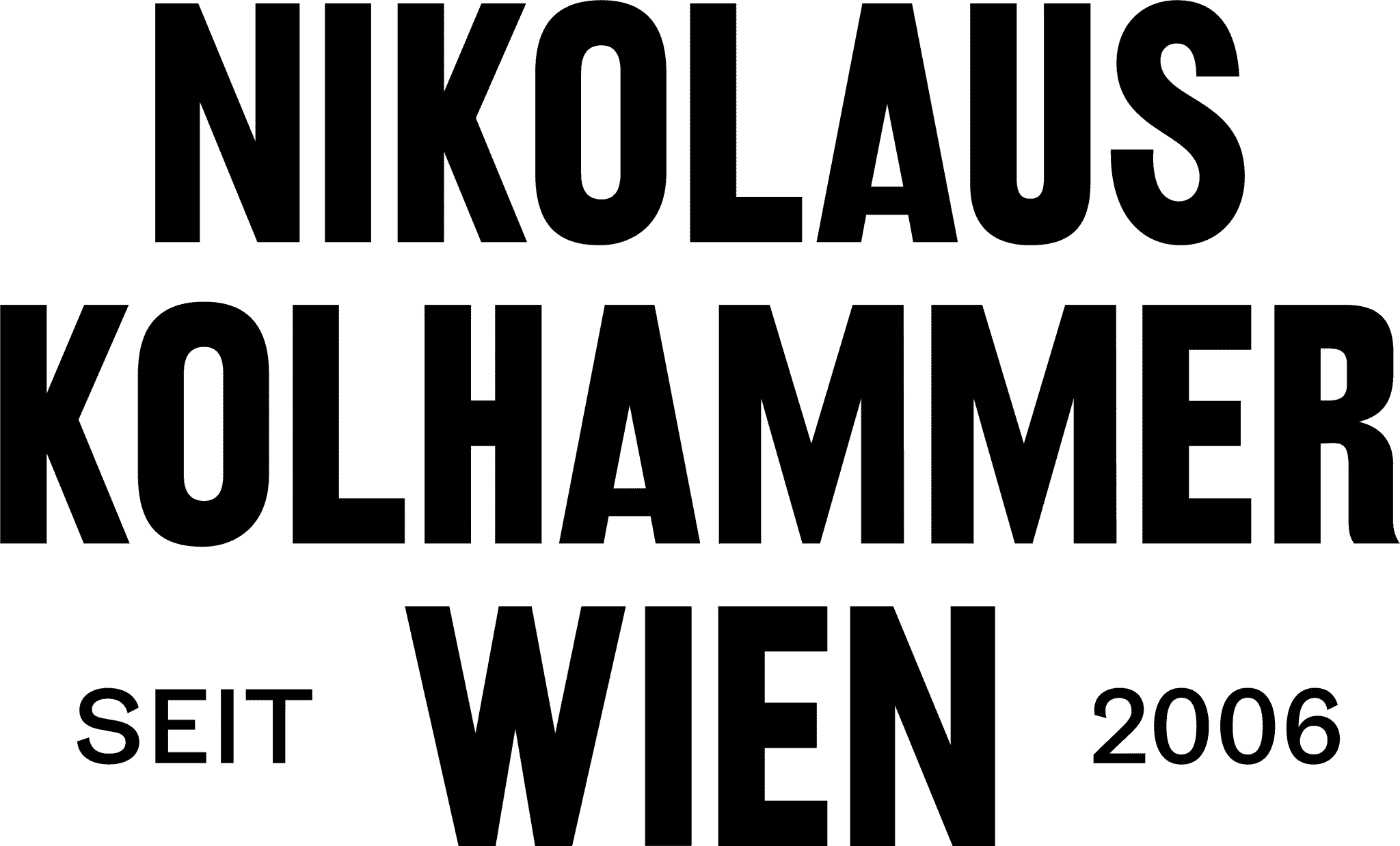Josef Hoffmann Nesting tables J.& J. Kohn ca. 1906
Four nesting tables with grids model no. 988, design Josef Hoffmann, manufactured by J.& J. Kohn Vienna, circa 1906, beechwood bent stained, glass top, original company label
original company label “Jacob & Josef Kohn, Wien”under the smallest table, original label indicating stain tone “Nuss 5” (nutwood) Bib.: Giovanni Renzi, „Il mobile moderno“, Silvana Editoriale Spa, Milano 2008, p. 180-181
Description
With the innovative idea of having their furniture designed by important designer-architects of Viennese Modernism, the company J. & J. Kohn became Thonet’s strongest competitor at the turn of the century. Until around 1867, the Gebruder Thonet had a de facto monopoly on the production of bentwood furniture in the Habsburg monarchy.
J. & J. Kohn commissioned renowned architects of the time, such as Otto Wagner, Josef Hoffmann, Koloman Moser and Gustav Siegel, to design furniture or entire interiors. With its high-quality furnishings, the company succeeded at many international exhibitions, including World Fair Paris 1900.
These set of nesting tables by Josef Hoffmann perfectly embodies the guiding principle of reduction to the essentials and functional forms. With the grids (Gitterwerk) on the sides, they are also a fine example of Hoffmann’s or Koloman Moser’s early Viennese Jugendstil, in which geometric elements such as squares or rectangles are used ornamentally.
Made of bentwood and stained, the nesting tables still bear the perfectly preserved company’s original adhesive label and a small original label indicating the stain tone.
Artist
Josef Hoffmann (Brtnice 1870 - 1956 Vienna), co-founder of the Viennese Secession and of the Wiener Werkstätte, was an extremely productive and versatile architect and designer. Throughout his career he experimented with various forms, techniques and materials. In his designs, he was striving for a strong reduction of the form to the essential and was a pioneer of geometric Jugendstil. This is how his characteristic geometric style was established. The scope of his designs ranges from buildings and entire interiors, following the concept of the “Gesamtkunstwerk” (total work of art), all the way to small details of everyday life. One of his most significant works is the Palais Stoclet in Brussels, a Gesamtkunstwerk which he executed for a wealthy entrepreneur between 1905 and 1911 in collaboration with, among others, Gustav Klimt and Koloman Moser.
Execution
Werkstätte Hagenauer – stylistic evolution and importance
Today, the Werkstatte Hagenauer is rightfully among the most important Austrian Arts & Crafts manufacturers of the 20th century. The clear, strict formal language combined with dynamic poses and the usage of brass, nickel-plated, patinated or bare, along with copper, alpaca and exotic wood shows a high level of recognition.
However, it took the siblings Karl and Franz Hagenauer quite some time until they developed their own unique style. Karl and Franz both attended the Vienna School of Arts & Crafts and studied under Josef Hoffmann, Oskar Strnad, Anton Hanak and Dagobert Peche.
Until the closure of the Werkstatte Hagenauer on December 30, 1987, art objects of outstanding quality were still being produced. The siblings Karl and Franz Hagenauer strongly contributed in coining the term „design“ through their legacy and are surely among the most influential Austrian artists of the 20th century.
Inquiry
By submitting the inquiry form, you agree to the use of your data for this inquiry. Privacy Policy
